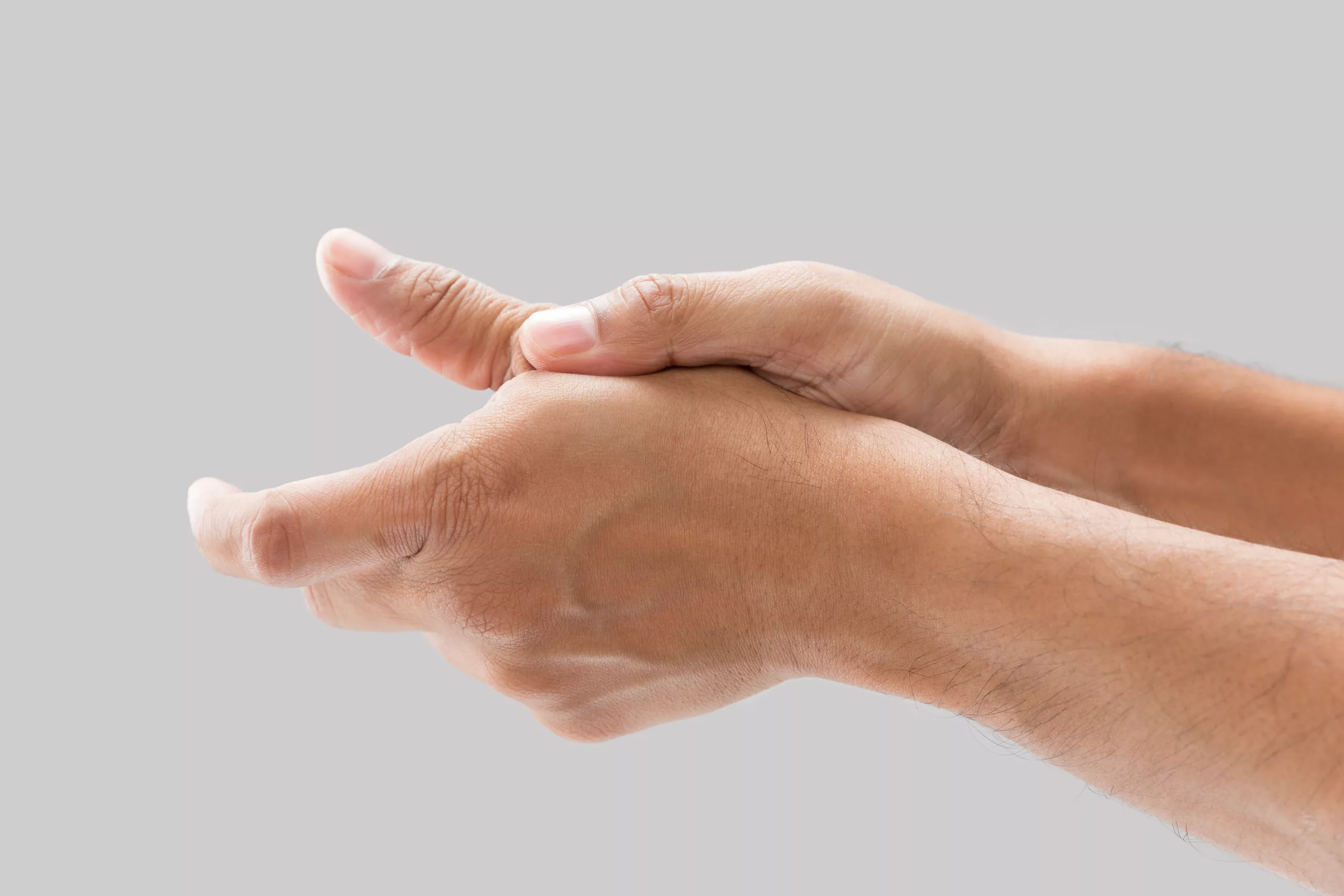
Understanding Ulnar Collateral Ligament (Thumb) Sprain: A Basic Guide
In the world of sports and physical activities, injuries are a common occurrence. One such injury that often goes unnoticed is the Ulnar Collateral Ligament (UCL) sprain, a hand injury that primarily affects the thumb. This blog post aims to shed light on this thumb injury, its causes, symptoms, and the physiotherapy treatment approach.
What is Ulnar Collateral Ligament (Thumb) Sprain?
A UCL sprain, often referred to as “Skier’s Thumb” or “Gamekeeper’s Thumb”, is a partial or complete tear of the ulnar collateral ligament in the thumb. This ligament consists of a proper and an accessory ligament and is the most common injury of the metacarpophalangeal (MCP) joint of the thumb. It often occurs in competitive sports such as baseball, football, wrestling, and skiing, which can lead to twisting of the thumb. If misdiagnosed, a UCL sprain can lead to chronic instability and thumb pain.
Causes and Risk Factors
UCL sprains occur from the application of excess valgus stress to the thumb, most commonly caused by falling on an abducted thumb. Twisting, combinations of abduction and hyperextension, and combinations of abduction and flexion have also been shown to cause UCL sprains. While trauma is the most common cause, atraumatic repetitive stress may also lead to a UCL sprain.
Understanding the Injury
As with other ligament sprains, UCL sprains can be graded from 1 to 3 depending on the severity of the tear. Tears of the proper UCL may occur at mid-length or more proximal on the ligament. The distal insertion of the UCL on the proximal phalanx base is commonly where ruptures occur. A complete UCL tear occurs when there is tearing of both the proper and accessory ulnar collateral ligaments.
Key Symptoms
General symptoms of a UCL sprain include UCL tenderness with palpation, joint pain with abduction (valgus) stress test, swelling, ecchymosis, and possible instability. There may also be possible weakness of pincer grasp and decreased active range of motion (AROM); passive range of motion (PROM) will vary depending on the severity of the tear.
General Approach to Treatment
The specific approach to treatment is dependent on the severity of the sprain. A complete ligament rupture (grade III sprain) requires surgical intervention. A partial tear (grade I, II) should be managed conservatively, which may include splint or plaster immobilization for three to six weeks. Following possible immobilization, gradual ROM should be initiated 4-6 weeks, with strengthening commencing at 6-8 weeks.
Exercise Examples
To improve strength and dexterity, active ROM, hand therapy balls, therapeutic putty, and functional exercises can be used. These exercises aim to improve grip strength, twisting, opposition, pinch, and other patient-specific functional tasks.
Manual Therapy
Manual therapy techniques such as range of motion, deep transverse frictions, and joint mobilization can be used to restore function and mobility. These techniques are usually initiated around 8 weeks post-injury, depending on the patient’s healing process.
Understanding and treating an Ulnar Collateral Ligament (Thumb) Sprain can be a complex process due to the intricate anatomy of the hand. However, with the right knowledge and approach, recovery is entirely possible. At Connect Physiotherapy & Exercise in Edmonton, we specialize in Hand Therapy and have a team of experienced therapists who can guide you through the recovery process. Our comprehensive approach ensures that you regain your strength and dexterity, helping you return to your regular activities as soon as possible. Remember, early diagnosis and treatment are key to a successful recovery from any thumb injury. If you’re experiencing thumb pain or any other symptoms mentioned in this post, don’t hesitate to reach out to us!
*Remember, while knowledge is power, self-diagnosis and treatment can be risky. While this blog provides useful information, it’s essential to see a trained professional for proper diagnosis and management. Every person is unique, and so is their recovery journey. At Connect Physiotherapy & Exercise, we’re all about personalized care. Let us help you navigate your path to recovery.
References
Baskies, M.A., & Lee, S.K. (2009). Evaluation and treatment of injuries of the ulnar collateral ligament of the thumb metacarpophalangeal joint. Bulletin of the NYU Hospital for Joint Diseases, 67, 68-74.
McCue, F. C., Hakala M. W., Andrews, J. R., & Gieck, J. H. (1974). Ulnar collateral ligament injuries of the thumb in athletes. American Journal of Sports Medicine, 2, 70-80.
Voight, M.L., Hoogenboom, B.J., & Prentice, W.E. (2007). Musculoskeletal Interventions: Techniques for therapeutic exercise. New York: McGraw-Hill

